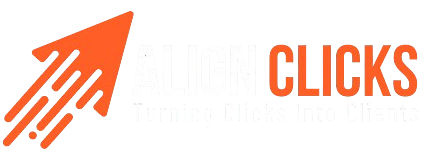A Comprehensive Guide for Business Owners
The internet offers a variety of platforms to share, connect, and engage. Among them, YouTube often finds itself in a unique position. It’s massive, evolving, and influential—but many ask, is YouTube social media? For business owners, understanding where YouTube fits can transform strategies, boost visibility, and unlock growth opportunities. This guide will break down the role of YouTube in the social media ecosystem while helping you make the most of it for your business.
Table of Contents
What is Social Media?

Definition of Social Media
Social media comprises platforms where users share content, engage with others, and build communities in the digital world. From Facebook to TikTok, the essence of social media lies in interaction and connection. Users are not just consumers—they are creators, collaborators, and participants.
Key Features of Social Media Platforms
- User-Generated Content – Social media thrives on content shared by its users, like photos, videos, and posts.
- Real-Time Connections – Features like live chats and instant comments allow users to interact as things happen.
- Building Relationships and Networks – Platforms offer spaces where people with similar interests or goals can unite. For example, Facebook Groups or Twitter threads create tightly-knit communities.
These interactive, community-focused characteristics are what differentiate social media from tools or static websites.
Importance of Social Media
Social media is more than entertainment—it’s an ecosystem where businesses connect directly with users. It allows for real-time feedback, interactive campaigns, and global outreach. Platforms like these often become a digital storefront, offering a space where brands can showcase their personality, products, and customer stories.
With these qualities in mind, how does YouTube stack up as a social platform?
Is YouTube Social Media? Exploring the Debate
The debate over YouTube’s identity often stems from its hybrid nature. Some see it simply as a video-streaming service or the world’s second-largest search engine, while others call it a social media heavyweight. Here’s why there’s merit to both arguments.
Reasons Why YouTube Qualifies as Social Media
- User Accounts and Profiles
YouTube encourages users to create profiles, tailor content preferences, and engage with videos they like. Think of it like creating a social profile on Instagram—users follow creators (via subscriptions) to keep receiving personalized content updates. - Viewer Engagement
Unlike traditional TV, YouTube thrives on engagement. Likes, dislikes, and shares are at the core of user activity. Comments often become mini forums of discussion—whether debating a product review or sharing laughs over a comedy skit. - Community Building Through Subscriptions
Subscribing to a channel mirrors joining a social media group. Creators post videos, stories, and community updates to foster relationships with their audience. For instance, PewDiePie’s loyal community reflects the power of consistent connection through relatable content.
The User-Generated Engine
The platform survives on its users. From cooking tutorials to ASMR videos, YouTube is powered by everyday people sharing content for others to interact with.
Arguments Against YouTube Being a Social Media Platform
- Minimal Real-Time Messaging
Unlike Facebook Messenger or WhatsApp, YouTube lacks strong chat or messaging options. Its conversations are limited to comments under videos. - Content Consumption vs. Interaction Ratio
YouTube has a larger focus on video consumption rather than user-level networking. It’s less about who you talk to and more about what you watch.
Even with these points, it’s clear YouTube operates on the backbone of interaction and engagement, key elements of social media.
The Evolution of YouTube as a Social Media Platform
Early Days of YouTube
When YouTube launched in 2005, it was simple—just a website for uploading videos. People shared videos mostly for fun, with no community-building tools. Think of it as a platform where you uploaded a “How to Tie a Tie” video and hoped it eventually reached a viewer who needed it.
Transition into a Social Hub
Over the years, YouTube began sprinkling in many social features:
- Comments allowed for direct user involvement.
- Subscriptions helped creators establish communities through consistent audience interaction.
- Sharing tools encouraged viral distribution of content.
Features like live chat during live streams and the ability to post community updates (stories, polls, gifs) solidified its social aspects. By introducing paid memberships, YouTube also paved avenues for deeper creator-audience relationships.
Grow your youtube channel with us
Your audience is waiting, so why wait? Jumpstart your YouTube presence today and connect the dots toward business success!
Know MoreYouTube didn’t just evolve as a platform; it built careers. Influencers like Marques Brownlee (tech) or James Charles (beauty) used YouTube as a launchpad to connect communities globally. These creators don’t just upload content—they foster conversations, collaborations, and communities similar to social media giants.
Comparing YouTube to Other Social Media Platforms
How does YouTube stack up against big names like Facebook, Instagram, and TikTok? Here’s an in-depth comparison.
YouTube vs. Facebook
- Content Format – YouTube relies on videos, while Facebook mixes formats like posts, photos, and links.
- Discovery – While YouTube aims to generate organic reach via algorithms tailored to the user’s interest, Facebook often pushes content based on personal relationships and connections.
For instance, a YouTube user binge-watching fitness videos could be served more workout-related suggestions—a more interest-led discovery model.
YouTube vs. Instagram
Instagram focuses primarily on aesthetic appeal through photos and short-form videos (Reels), while YouTube dives into long-form storytelling. Want to learn how to cook a 3-course meal? Instagram might offer 90-second clips; YouTube goes deep with detailed, 20-minute tutorials.
YouTube vs. TikTok
TikTok thrives on ultra-short videos, capitalizing on trends and fast-paced entertainment. YouTube, in contrast, prioritizes long-form engagement, making it better suited for educational content, deep dives, and tutorials.
This versatility is invaluable when considering YouTube’s appeal to a broad audience, from teens to professionals.
Leveraging YouTube as a Social Media Platform for Business
Business strategies on YouTube are as dynamic as the platform itself. Whether you’re a global brand or a small bakery, YouTube offers powerful tools for growth.
Why YouTube Matters for Businesses
- Global Reach
With billions of daily active users, YouTube reaches markets across languages and borders. A small skincare brand in Texas can create tutorials that resonate with customers in Tokyo. - Educational Content as a Hook
Many people turn to YouTube for solutions. “How to Fix a Laptop” or “Best Budget Cameras of 2023” videos carry immense potential to showcase expertise—this is where brands make their mark. - Budget Flexibility
Starting a YouTube campaign is as low-cost as creating videos with your phone. Unlike traditional print or TV ads, motion or narrative barriers are low.
Tips to Optimize Your YouTube Presence
- SEO Brilliance – Keywords in video descriptions, catchy titles, and optimized tags can make the difference between 100 or 10 million views. Keep your focus keyword, like YouTube social media, naturally embedded within content.
- Consistency Counts – Stick to a defined schedule for uploads. Regularity builds loyalty.
- Engage Through CTAs – Include Call-to-Actions urging viewers to visit your website or subscribe (e.g., “Click the link to grab your copy today!”).
By maintaining an interactive space via comments and exploring current YouTube tools like Shorts, you can diversify your outreach methods.
Which Social Media Category Does YouTube Fall Under?
YouTube sits firmly in the video-first category of social media. Beyond entertainment, it occupies two other niches:
- Educational Hub – Coursera-like courses and DIY tutorials make it helpful for knowledge seekers.
- Influencer-driven Marketplaces – YouTube empowers content entrepreneurs to monetize and attract brand sponsorships.
Whether consumed for fun or for learning, YouTube occupies emotional as well as informational spaces.
How to Use YouTube Strategically to Drive Business
Actionable Video Ideas
- Create Exclusive Meetups – Live chat Q&A can directly address customer questions.
- Collaborate Creatively – Partner with an established YouTuber from a compatible niche to bring visibility to both brands.
Analytics Are the Key
Study your YouTube Analytics data to know which videos succeed and see how viewers engage. Know which videos people like best and which viewers watch them. Measure your YouTube analytics findings to improve your content performance with your audience.
Get Free Website Audit!
Frequently Asked Questions (FAQs)
Why is YouTube considered social media?
Should businesses treat YouTube as a social media platform?
Final Thoughts
To answer the question, is YouTube social media, it’s a loud and clear YES. It offers the interaction and community-building of social networks with the added power of video storytelling.
If you’ve been hesitant about starting your own YouTube strategy, this is your sign. Build meaningful connections, amplify your expertise, and watch your brand grow, one video at a time.



